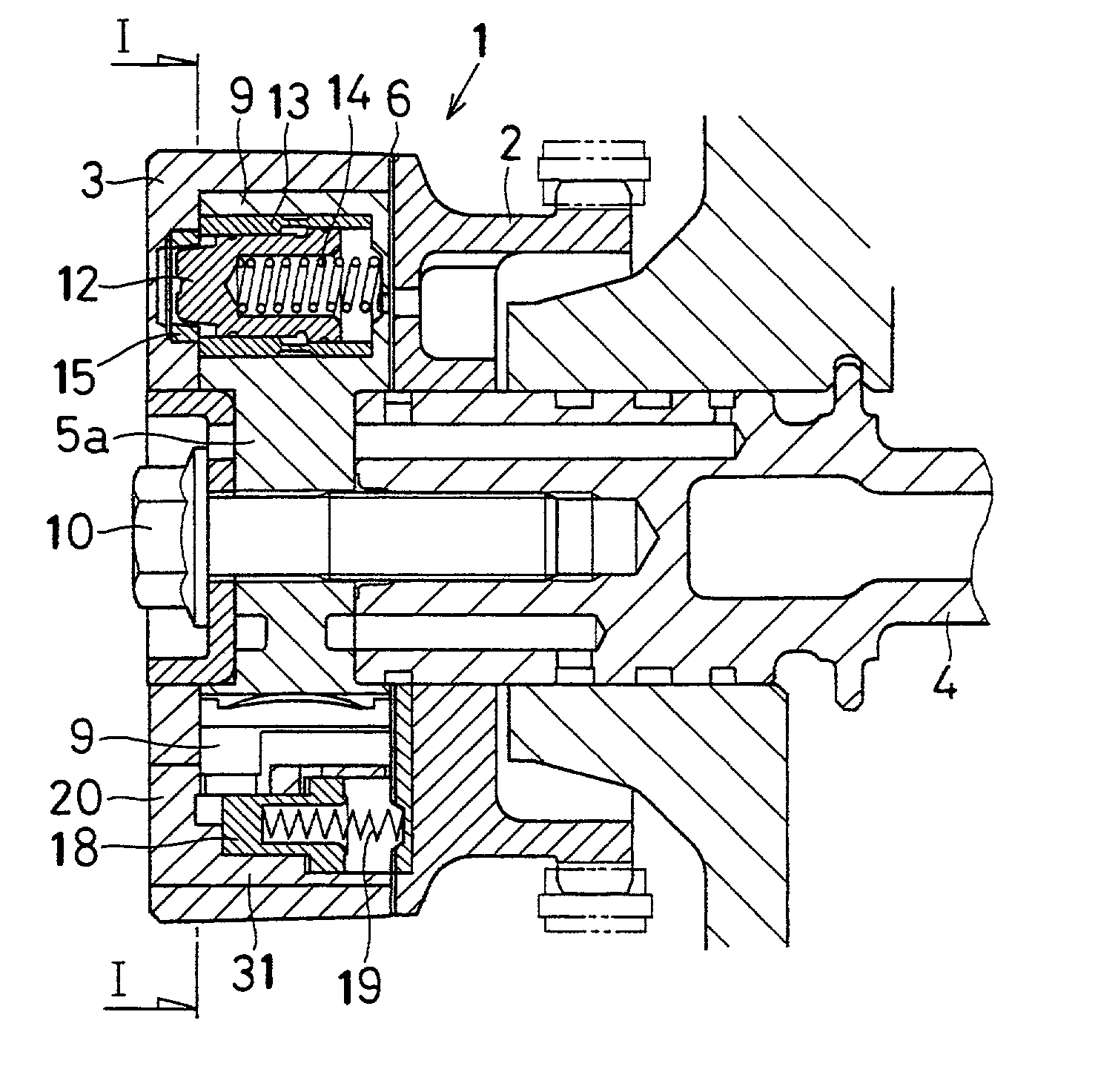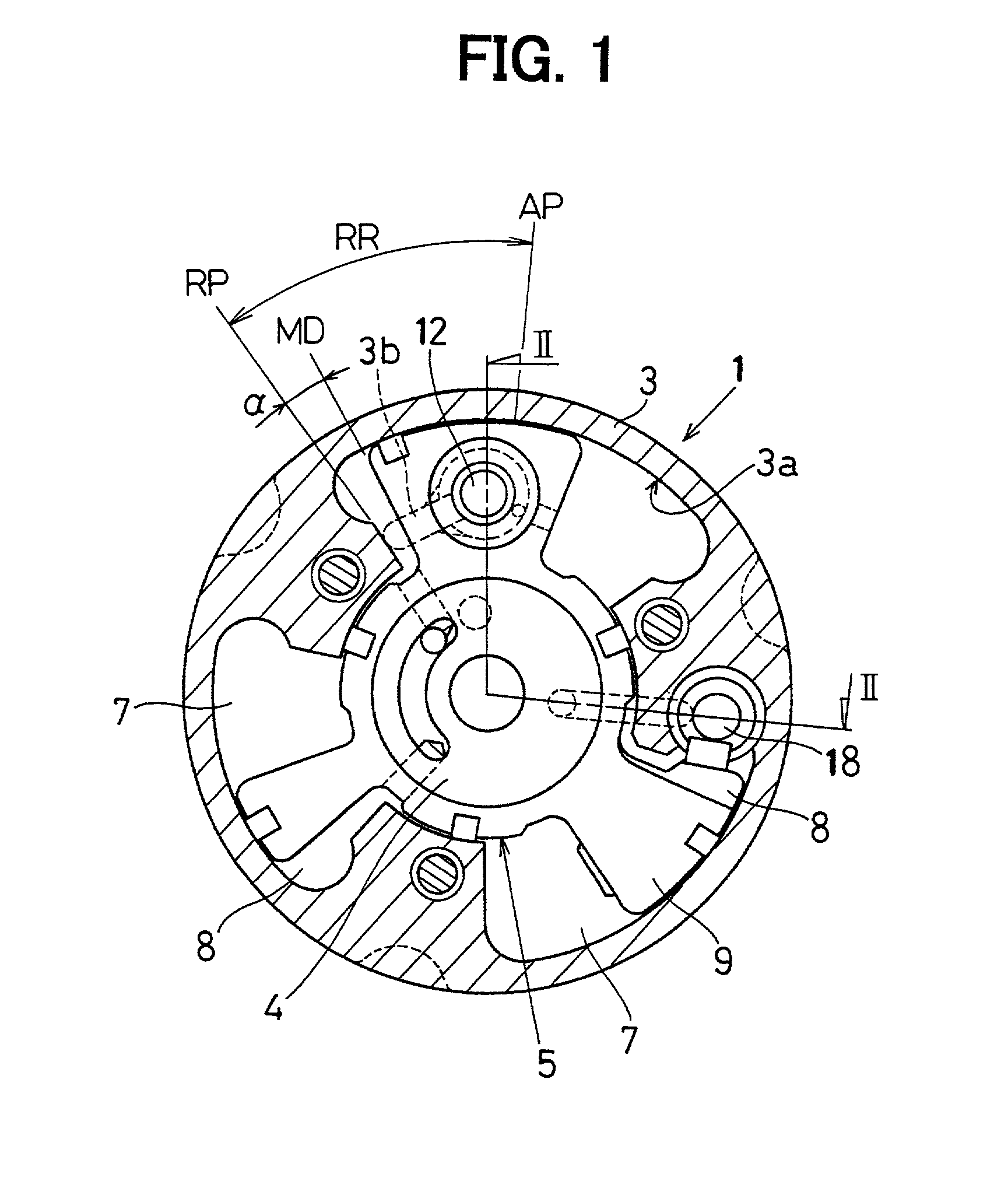Variable valve timing apparatus
a timing apparatus and variable valve technology, applied in mechanical equipment, valve arrangements, machines/engines, etc., can solve the problems of difficult engine start, inability to secure the hydraulic pressure required to lock the rotor,
- Summary
- Abstract
- Description
- Claims
- Application Information
AI Technical Summary
Benefits of technology
Problems solved by technology
Method used
Image
Examples
first embodiment
ADVANTAGES OF THE FIRST EMBODIMENT
[0112] In present embodiment, there is provided with the rotor rotation restricting unit capable of preventing the rotor 5 from rotating from the normal delay angle position to the delay angle side. That is, when the engine starts, the rotor 5 can be locked at the normal delay angle position by the rotor rotation restricting unit, so that it is possible to realize a valve timing suitable for starting the engine when the engine starts. Further, by pushing down the delay angle restricting pin 18 to the retracted position to release the rotor rotation restricting unit, the rotor 5 can be rotated to the largest delay angle position, so that it is possible to realize a valve timing suitable for improving fuel consumption and increasing power after the idling operation of the engine.
[0113] Further, by keeping a balance of pressure applied to the delay angle restricting pin 18 in the first control chamber 16 and in the second control chamber 17 in the stat...
second embodiment
[0119] Since the control chambers (the first control chamber 16 and the second control chamber 17) are formed in the sleeve 20 incorporated in the case 3 in the above embodiment, the orifice 21a provided in the oil passage 21 communicating with the first control chamber 16 from the delay angle chamber 7 may be provided in the sleeve 20. In this case, for example, as shown in FIG. 9, it is possible to form the first hydraulic pressure introducing port 16a opening to the first control chamber 16 as the orifice 21a.
third embodiment
[0120] FIG. 10 is a cross sectional view of a VVT 1 (cross sectional view taken on a line X-X in FIG. 11) and FIG. 11 is a cross sectional view taken on a line XI-XI in FIG. 10.
[0121] The VVT 1 of the present embodiment is one example having a configuration in which the delay angle restricting pin 18 of the rotor rotation restricting unit can move in the radial direction.
[0122] In the rotor rotation restricting unit, as shown in FIG. 10 and FIG. 11, the delay angle restricting pin 18 can move in the radial direction with respect to the rotor 5 and can retractably move between the restricting position that blocks the rotational path of the rotor 5 and the retracted position that allows the rotor 5 to rotate.
[0123] The rotor 5 has an arc-shaped clearance groove (see FIG. 10) made within a predetermined angle range on its outer peripheral surface. This clearance groove 32 is made so as to allow the rotor 5 to rotate in the state where the delay angle restricting pin 18 is pushed out to...
PUM
 Login to View More
Login to View More Abstract
Description
Claims
Application Information
 Login to View More
Login to View More - R&D
- Intellectual Property
- Life Sciences
- Materials
- Tech Scout
- Unparalleled Data Quality
- Higher Quality Content
- 60% Fewer Hallucinations
Browse by: Latest US Patents, China's latest patents, Technical Efficacy Thesaurus, Application Domain, Technology Topic, Popular Technical Reports.
© 2025 PatSnap. All rights reserved.Legal|Privacy policy|Modern Slavery Act Transparency Statement|Sitemap|About US| Contact US: help@patsnap.com



